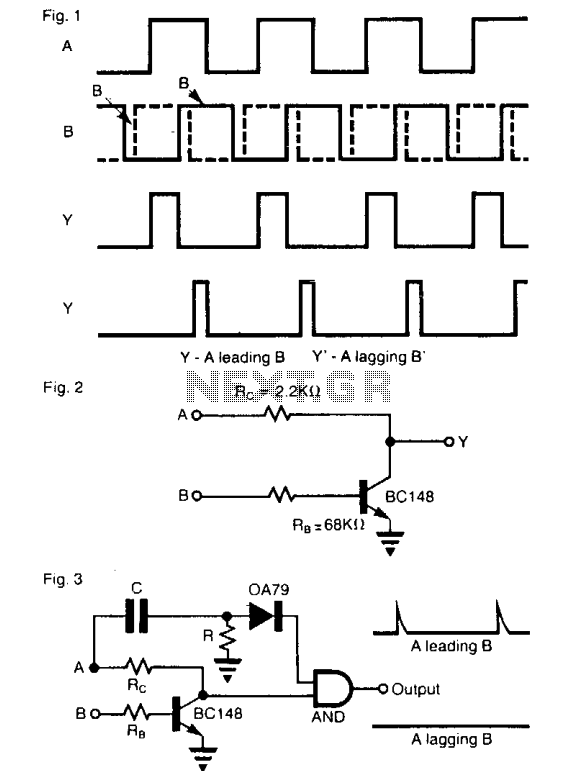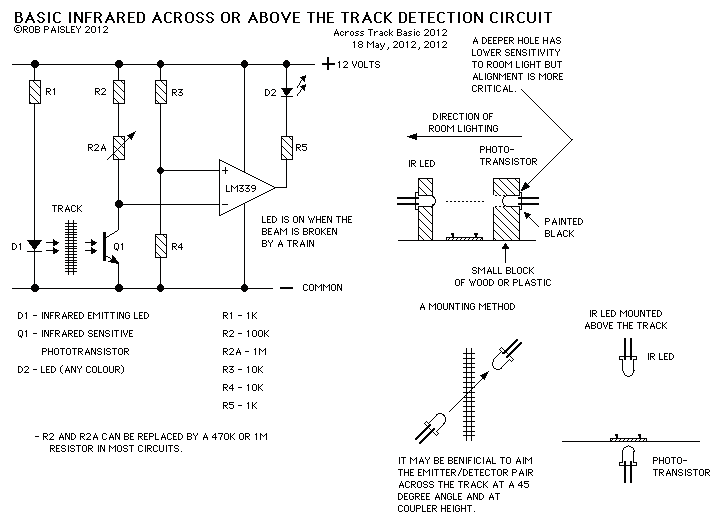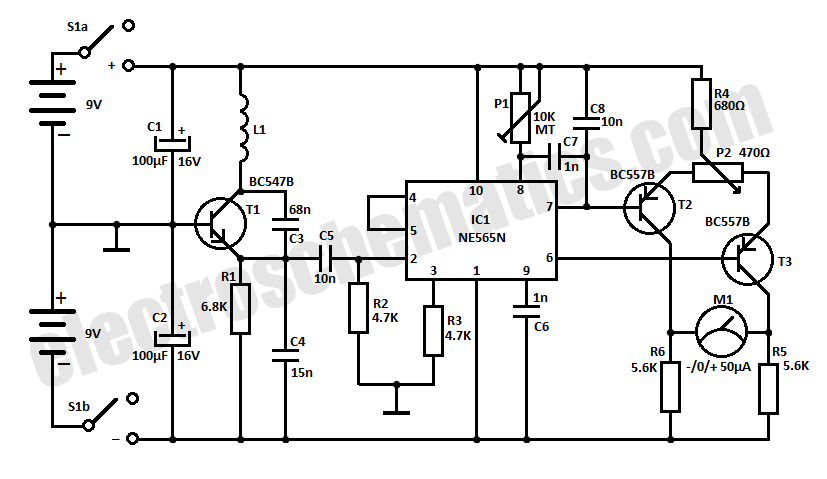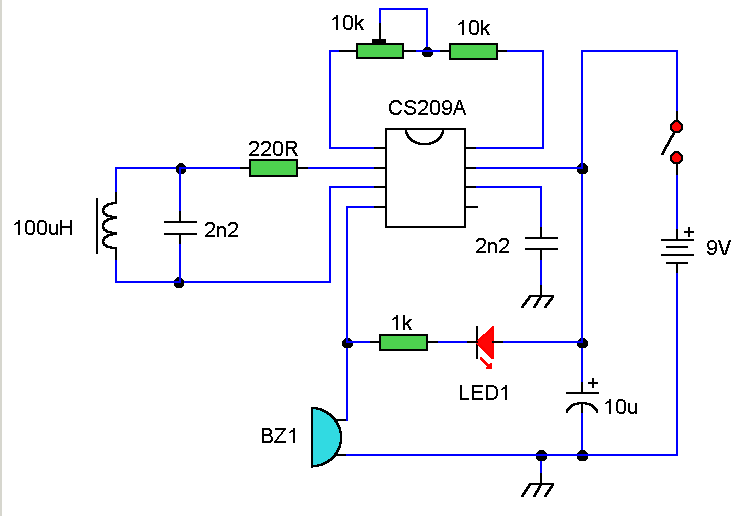
Proximity detector
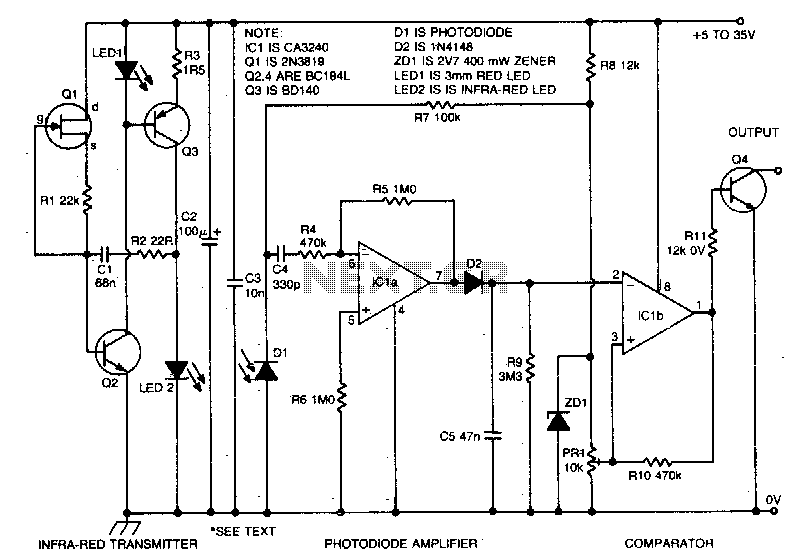
The proximity sensor operates on the principle of emitting a beam of modulated infrared light from the LED2 emitter diode and detecting reflections from objects that come into the path of the beam using a photodiode detector, Dl. The circuit can be divided into three distinct stages: the infrared transmitter, the photodiode amplifier, and a variable threshold comparator.
The proximity sensor circuit consists of three main components that work together to detect nearby objects through the modulation of infrared light.
1. **Infrared Transmitter**: The first stage involves the infrared transmitter, which utilizes an LED (LED2) to emit modulated infrared light. This modulation can be achieved by varying the current through the LED, creating a pulsing effect that enhances the detection capability by allowing the system to differentiate between ambient light and the emitted signal.
2. **Photodiode Amplifier**: The second stage includes a photodiode (Dl) that serves as the receiver for the infrared light. When an object enters the proximity of the sensor, the emitted infrared light is reflected back towards the photodiode. The photodiode converts the received light into an electrical signal. This signal is typically weak and requires amplification for further processing. An operational amplifier (op-amp) configuration is often used to increase the signal strength, ensuring that even small reflections can be detected.
3. **Variable Threshold Comparator**: The final stage is a variable threshold comparator, which processes the amplified signal from the photodiode. This comparator is designed to compare the amplified signal against a predefined threshold level. If the signal exceeds this threshold, it indicates the presence of an object in the sensor's range. The output of the comparator can then be used to trigger an alert, activate a relay, or interface with a microcontroller for further actions.
Overall, the proximity sensor circuit effectively utilizes the principles of infrared light transmission and reflection, combined with signal amplification and comparison, to provide reliable detection of nearby objects. This setup is commonly employed in various applications, including automatic lighting systems, obstacle detection in robotics, and security systems.The proximity sensor works on the principle of transmitting a beam of modulated infra-red light from the emitter diode LED2, and receiving reflections from objects passing in front of the beam with a photodiode detector Dl The circuit can be split into three distinct stages; the infra-red transmitter, the photo-diode amplifier, and a variable threshold comparator. 🔗 External reference
The proximity sensor circuit consists of three main components that work together to detect nearby objects through the modulation of infrared light.
1. **Infrared Transmitter**: The first stage involves the infrared transmitter, which utilizes an LED (LED2) to emit modulated infrared light. This modulation can be achieved by varying the current through the LED, creating a pulsing effect that enhances the detection capability by allowing the system to differentiate between ambient light and the emitted signal.
2. **Photodiode Amplifier**: The second stage includes a photodiode (Dl) that serves as the receiver for the infrared light. When an object enters the proximity of the sensor, the emitted infrared light is reflected back towards the photodiode. The photodiode converts the received light into an electrical signal. This signal is typically weak and requires amplification for further processing. An operational amplifier (op-amp) configuration is often used to increase the signal strength, ensuring that even small reflections can be detected.
3. **Variable Threshold Comparator**: The final stage is a variable threshold comparator, which processes the amplified signal from the photodiode. This comparator is designed to compare the amplified signal against a predefined threshold level. If the signal exceeds this threshold, it indicates the presence of an object in the sensor's range. The output of the comparator can then be used to trigger an alert, activate a relay, or interface with a microcontroller for further actions.
Overall, the proximity sensor circuit effectively utilizes the principles of infrared light transmission and reflection, combined with signal amplification and comparison, to provide reliable detection of nearby objects. This setup is commonly employed in various applications, including automatic lighting systems, obstacle detection in robotics, and security systems.The proximity sensor works on the principle of transmitting a beam of modulated infra-red light from the emitter diode LED2, and receiving reflections from objects passing in front of the beam with a photodiode detector Dl The circuit can be split into three distinct stages; the infra-red transmitter, the photo-diode amplifier, and a variable threshold comparator. 🔗 External reference


